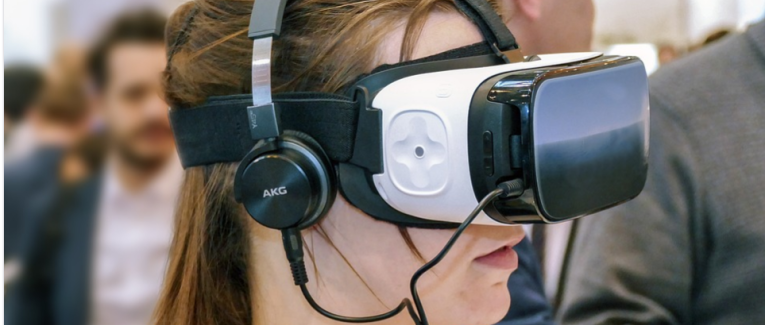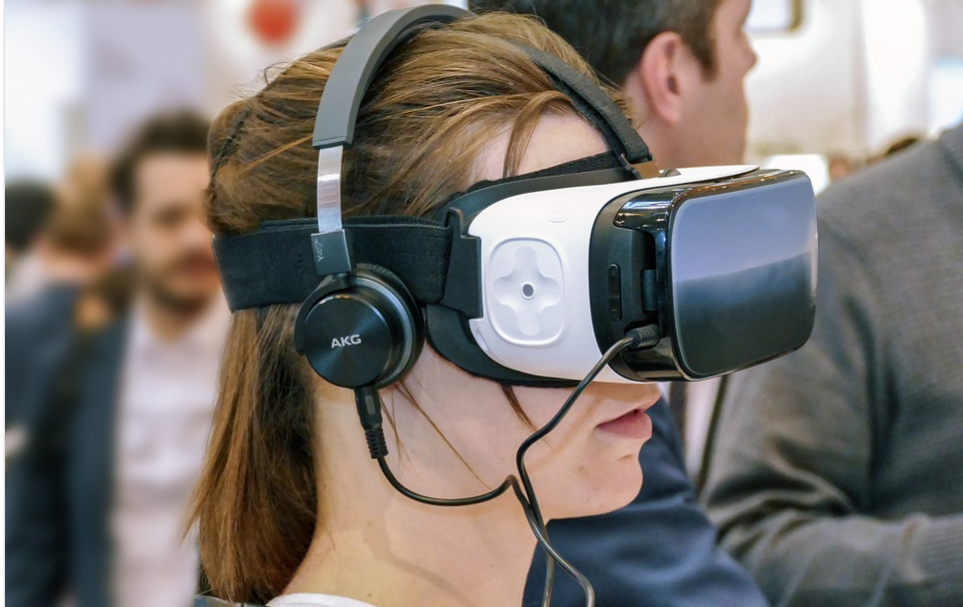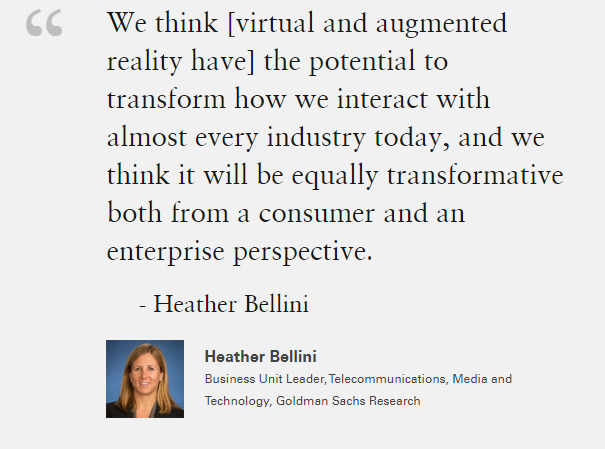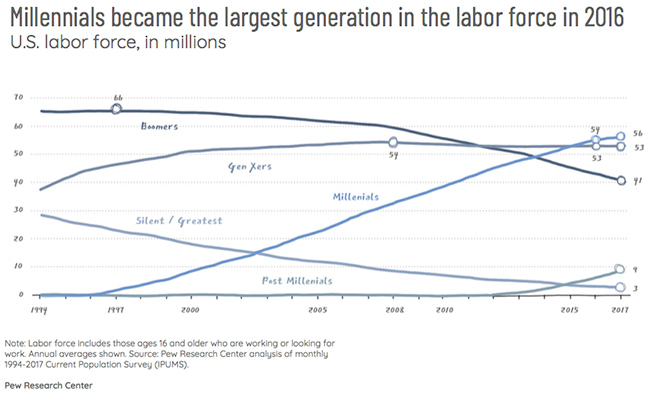
How VR Is Changing The Game In Workplaces
 5 min
5 min
How VR Is Changing The Game In Workplaces

via Pixabay
For most of the workplaces, working and interacting online using digital technologies both in and outside of the office have become not only a must but a norm. To an extent, this form of interaction holds a bit impersonality, which remains a serious matter for employers. Can Virtual Reality (VR) solve this problem?

via goldmansachs.com
VR is expected to become an $80 million market by 2025. According to this Goldman Sachs report, this market roughly equals the size of the PC market today. While the adoption of VR will not be as high as the one of smartphones, the VR technology is expected to spawn a billion-dollar industry and change the game.
Wondering how VR can add value to workplaces? Let’s explore that.
Saying Goodbye To Hypothetical Training
Training your employees can be tricky at times as the skill sets you want them to hone are hypothetical. That’s where VR shows up. You can deploy VR technologies to simulate real-world situations that expose employees to situations such as going about a customer complaint or turning an unhappy client into a satisfied one. Also, in the healthcare industry, VR is being a huge potential as it enables more improved pieces of training demanding less and less human testing.
Virtual Reality has already proven efficiency in training in many industries including astronomy. NASA uses VR to train people they send into space. Astronauts face a bunch of contingencies on their way to space. VR is used to simulate the conditions and environment out there so that astronauts can be prepped for any situation.
However, you don’t have to be an astronaut to experience the potential of VR in your workplace.
Making Work Easier For HR
Millennials are the largest segment in workplaces. A study’s shown that this generation wants more flexibility, mobility, and a more balanced work-life. Thus, this generation is really picky when it comes to choosing an employer.

In this case, VR can be used by Human Ressources to help candidates make up more objective decisions - when it comes to choosing whether they should work with a company. This can easily be done by using VR to show candidates what’s a day in the life of an employee at the said organization. Furthermore, candidates can tour the employer’s organization offices.
As a result, HRs can increase retention rates and reduce employee turnover. Also, adopting VR will give your employees the flexibility and mobility they’re looking for as they can choose when, where and how to work. Thereby, HR along with managers can also track the progress of ongoing projects.
Catalyzing Improved Collaboration
The problem with remote work, regarding team collaboration, is that team members constantly have to be communicating using collaborative tools like Slack. Well, Slack is not the problem, actually. The big deal is that remote teams have to spend a considerable part of their time communicating.
When using VR with your remote workers, you are more likely to gain efficiency in time management and improve communication. You get to interact face to face with coworkers or at least with their digital avatars.
Instead of going through Skype calls or Slack groups, remote workers would be able to interact with each other and collaborate on projects as if they were all around in the same place. The best part of it is that VR can translate body language and other sorts of non-verbal communication. Another highlight is that the language barriers are broken down thanks to the integrated real-time translators.
On the other hand, VR improves your remote employees’ productivity as it helps them maintain focus and prevent them from continuous isolation.
Recap’
Although Virtual Reality holds the potential to transform workplaces and businesses, it’s adoption will not be as fast as one of the smartphones. This is mainly due to the fact that using VR technologies cost an arm and a leg. Plus, it takes time to create custom software that meets the particularity of each business.
However, as remote work is on the rise, more and more businesses are contemplating the idea of adopting VR to improve and facilitate organizational business processes.









 English
English
 Français
Français
 Deutsch
Deutsch
 Italiano
Italiano
 Español
Español



 Contribuer
Contribuer












 Tu peux soutenir les auteurs qui te tiennent à coeur
Tu peux soutenir les auteurs qui te tiennent à coeur





